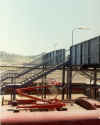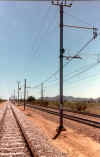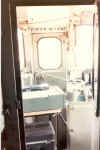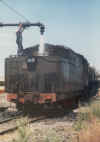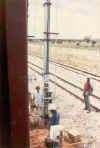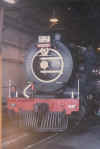Between 8th and 22nd of November 1980 the author spent two weeks in South Africa supporting the SAR trials of the then still developing BR/Brecknell Willis high speed pantograph.
SAR were proposing to introduce a new high speed service to link Pretoria with Johannesburg and were evaluating a number of European pantographs for fitting to their General Electric 6E locomotives. The trains were to run at 90 mile/h (144 km/h) on the
3kV OHLE, which usually saw nothing above 50 mile/h (80 km/h). This was exactly what the pantograph had been designed for but we overlooked the fact that the extremely wide head on SAR would cause us no end of
problems with aerodynamics.
The pantograph was fitted to
GEC 6E1 loco No: E1525 which had been specially re-geared for high speed running
and carried the BR/BW as a second pantograph. This loco had previously run at
245 km/h during tests with the Scheffel bogie.
Testing was carried out over a 10 km length of straight track between Rosslyn
and De Wildt on the line between Pretoria and Brits with sections of the OHLE
instrumented to measure wire uplift. Total possession of the line enabled the
test loco to run at high speed in both directions on a single line whilst the
adjacent track was open for normal running.
During the trials, speeds of up to 125 mile/h (200 km/h) were achieved with the pantograph, some of the fastest running ever on the narrow 3 ft 6 inch gauge (1050mm) track, especially with a light engine!
During my time with SAR engineers they kindly arranged for a shed visit to
Capital Park and Germiston.
Some pictures of steam locos are included on this page but more
are on their own page HERE.






